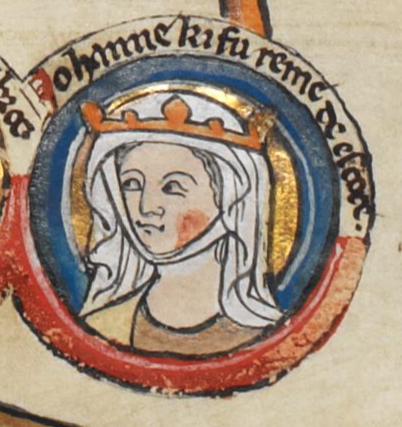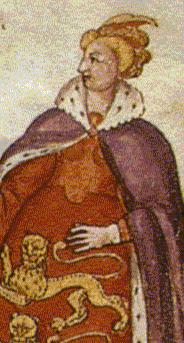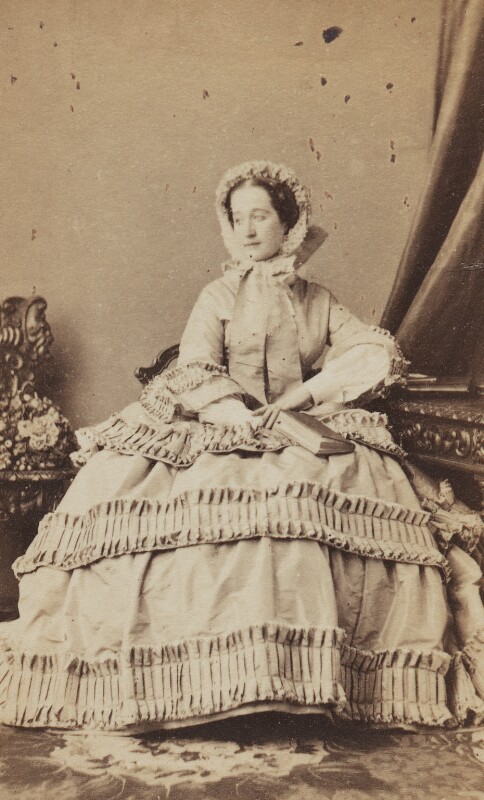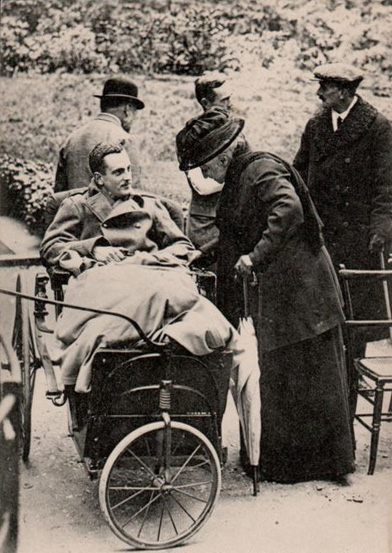by Scott Mehl
© Unofficial Royalty 2017

Princess Alice of Battenberg, Princess Andreas of Greece and Denmark; circa 1967
Princess Alice of Battenberg was the mother of Prince Philip, Duke of Edinburgh, and a great-granddaughter of Queen Victoria. She was born HSH Princess Victoria Alice Elisabeth Julia Maria on February 25, 1885, in the Tapestry Room at Windsor Castle in Windsor, England. Her parents were Prince Ludwig (Louis) of Battenberg, later 1st Marquess of Milford Haven, and Princess Victoria of Hesse and by Rhine, a grandchild of Queen Victoria.
Alice was the eldest child, with three younger siblings:
- Princess Louise, later Lady Louise Mountbatten (1889-1965) – married King Gustaf VI Adolf of Sweden, no issue
- Prince George, later 2nd Marquess of Milford Haven (1892-1938) – married Countess Nadejda Mikhailovna de Torby, had issue
- Prince Louis, later 1st Earl Mountbatten of Burma (1900-1979) – married Edwina Ashley, had issue
Alice was christened in Darmstadt, Grand Duchy of Hesse and by Rhine, now in Hesse, Germany, on April 25, 1885, with the following godparents:
- Queen Victoria of the United Kingdom (maternal great-grandmother)
- Ludwig IV, Grand Duke of Hesse and by Rhine (maternal grandfather)
- Prince Alexander of Hesse and by Rhine (paternal grandfather)
- Julia von Hauke, Princess of Battenberg (paternal grandmother)
- Grand Duchess Elisabeth Feodorovna of Russia (maternal aunt)
- Marie of Battenberg, Princess of Erbach-Schönberg (paternal aunt)
As a child, Alice was diagnosed with congenital deafness and learned to lip-read in both English and German. Later, she also learned French and Greek. Her childhood was spent in Darmstadt and Jugenheim, both in the Grand Duchy of Hesse and by Rhine, now in the German state of Hesse, as well as London, England, and Malta where her father was stationed. The family was very close to their British relatives, and Alice served as a bridesmaid at the 1893 wedding of the future King George V of the United Kingdom and Princess Mary of Teck. Alice’s family was also very close to their Russian relatives. Her aunt was Empress Alexandra Feodorovna of Russia, the former Alix of Hesse and by Rhine, and the families often spent holidays together in Darmstadt.

At the 1902 coronation of her great-uncle, King Edward VII of the United Kingdom, Alice met Prince Andreas of Greece and Denmark. They quickly fell in love and were married in a civil ceremony in Darmstadt on October 6, 1903. The following day, two religious ceremonies were held, one Lutheran and one Greek Orthodox. Their wedding was one of the last large gatherings of European royals before World War I. The couple settled into a wing of the Royal Palace in Athens, Greece, and had five children:
- Princess Margarita of Greece and Denmark (1905-1981) – married Gottfried, Prince of Hohenlohe-Langenburg, had issue
- Princess Theodora of Greece and Denmark (1906-1969) – married Berthold, Margrave of Baden, had issue
- Princess Cecilie of Greece and Denmark (1911-1937) – married Georg Donatus, Hereditary Grand Duke of Hesse and by Rhine, had issue
- Princess Sophie of Greece and Denmark (1914-2001) – married (1) Prince Christoph of Hesse, had issue; (2) Prince Georg Wilhelm of Hanover, had issue
- Prince Philippos of Greece and Denmark (1921-2021) – married Queen Elizabeth II of the United Kingdom, had issue
While Andreas pursued his military career, Alice raised her family and became involved in charity work in Greece. However, the political situation in Greece was often tenuous, and the family was forced into exile several times. They lived in Switzerland for several years before King Constantine II was restored to the Greek throne in 1920. Their return to Greece was short-lived. In 1922, King Constantine II was forced to abdicate and Prince Andreas was arrested and charged with treason. He was court-martialed and convicted and would have probably been executed had it not been for the intervention of Alice’s cousin, King George V of the United Kingdom. King George sent a British cruiser HMS Calypso to take Andreas, Alice, and their children into exile.
The family settled in Saint-Cloud, outside of Paris, France in a small house owned by Andreas’s sister-in-law Princess George of Greece (the former Marie Bonaparte). Alice worked in a charity shop for Greek refugees and became very religious. On October 20, 1928, she very quietly converted to the Greek Orthodox Church. Soon, Alice began to show signs of mental illness. In 1930, following a nervous breakdown, Princess Alice was diagnosed with paranoid schizophrenia. She was institutionalized in a sanatorium in Kreuzlingen, Switzerland, under the care of Dr. Ludwig Binswanger. After two years in Kreuzlingen and a brief stay at a clinic in Merano, Italy, she was released. It would be another four years before she had contact with her children, having only maintained ties with her mother.
During her absence, all four of her daughters had married and begun their own families. Sadly, it was a tragic event that brought Alice back into contact with her children. On November 16, 1937, Alice’s daughter Cecilie, along with her husband, two children, and mother-in-law were killed in a plane crash in Belgium. Alice attended the funeral in Darmstadt, reconnecting with her surviving children, and meeting her husband for the first time in six years.
In 1938, Alice returned to Greece, continuing her work with the poor. Along with her sister-in-law Princess Nicholas of Greece (the former Grand Duchess Elena Vladimirovna of Russia), Alice worked with the Red Cross during World War II to organize shelters and nurses in the poor neighborhoods of Athens. Alice and Elena had been the only two members of the Greek Royal Family to remain in the country, while the rest had gone into exile in South Africa. In 1943, after the German Army occupied Athens, and while most Jews were being deported to concentration camps, Alice hid a Jewish widow Rachel Cohen and two of her children in her home. Thirty years earlier, Mrs. Cohen’s husband had come to the aid of King George I of Greece, and the King had offered to someday repay him if there was ever anything he could do for him. Mrs. Cohen remembered this promise and reached out to Princess Alice. Alice, who saw both the opportunity to repay the debt and help save their lives, took the family in, risking her own life in doing so. The following year, she was widowed when Prince Andreas died in Monte Carlo. The two had not seen each other since 1939.
In November 1947, Alice returned to the United Kingdom for her son’s wedding. Some of her jewels were used to create Elizabeth’s engagement ring and a bracelet that Philip designed for her as a wedding gift. On November 20, 1947, Alice attended the wedding, although none of her daughters had been invited due to their marriages to Germans, and the still-strong anti-German sentiment after the war. In the group photo from the wedding above, Princess Alice is seen in the front row on the left, standing next to Queen Mary. Alice’s mother, the Dowager Marchioness of Milford Haven is seen on the far right, next to King George VI and Queen Elizabeth.
Just over a year later, Princess Alice founded a nursing order of nuns, the Christian Sisterhood of Martha and Mary. She established a home for the order just north of Athens and trained on the Greek island of Tinos. Alice made two tours of the United States to raise funds to support the order. Many people were perplexed by this venture, none more so than Alice’s mother, the Dowager Marchioness of Milford Haven, who reportedly said: “What can you say of a nun who smokes and plays canasta?” Unfortunately, the order did not last very long, due to a limited number of applicants. However, Alice continued her work supporting those in need and dressed as a nun for the rest of her life.

Alice leading her family’s procession at the Coronation of Queen Elizabeth II, June 1953
On June 2, 1953, Princess Alice attended the coronation of her daughter-in-law, Queen Elizabeth II, at Westminster Abbey in London. Wearing a gown designed to look like a nun’s habit, she led the formal procession of Philip’s family, including his three surviving sisters and his uncle Prince George of Greece.

photo: Hello!
Alice remained in Greece, working to help the poor and those in need. However, as the political situation worsened, and with her children’s growing concern for her safety, it soon became obvious that she would need to leave the country she had grown to love so much since first arriving in 1903. She left Greece in 1967 following the Colonels’ Coup and was invited by her son and daughter-in-law to live at Buckingham Palace in London, England. She died there on December 5, 1969, at the age of 84. Following her funeral, her remains were placed in the Royal Crypt at St. George’s Chapel, Windsor. Alice had previously expressed her wish to be buried near her aunt Grand Duchess Elizabeth Feodorovna of Russia, born Princess Elisabeth of Hesse and by Rhine, at the Convent of Saint Mary Magdalene on the Mount of Olives in Jerusalem. On August 3, 1988, nearly 19 years after her death, her remains were moved to Jerusalem and placed in a crypt below the church.
On October 31, 1994, Princess Alice was posthumously recognized as Righteous Among the Nations for her sheltering of persecuted Jews during World War II. In 2010, she was named a Hero of the Holocaust by the British Government.

King Charles III visiting his grandmother’s tomb in September 2016. photo: Clarence House/PA
This article is the intellectual property of Unofficial Royalty and is NOT TO BE COPIED, EDITED, OR POSTED IN ANY FORM ON ANOTHER WEBSITE under any circumstances. It is permissible to use a link that directs to Unofficial Royalty.
























